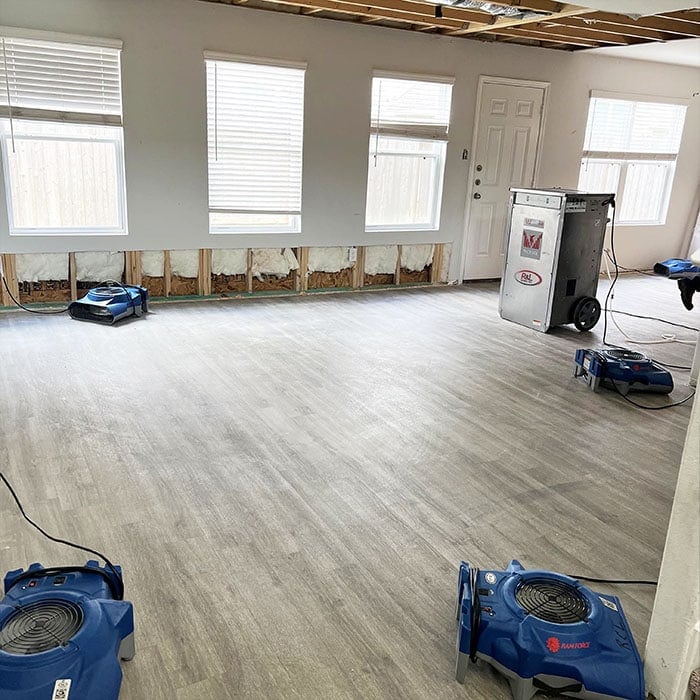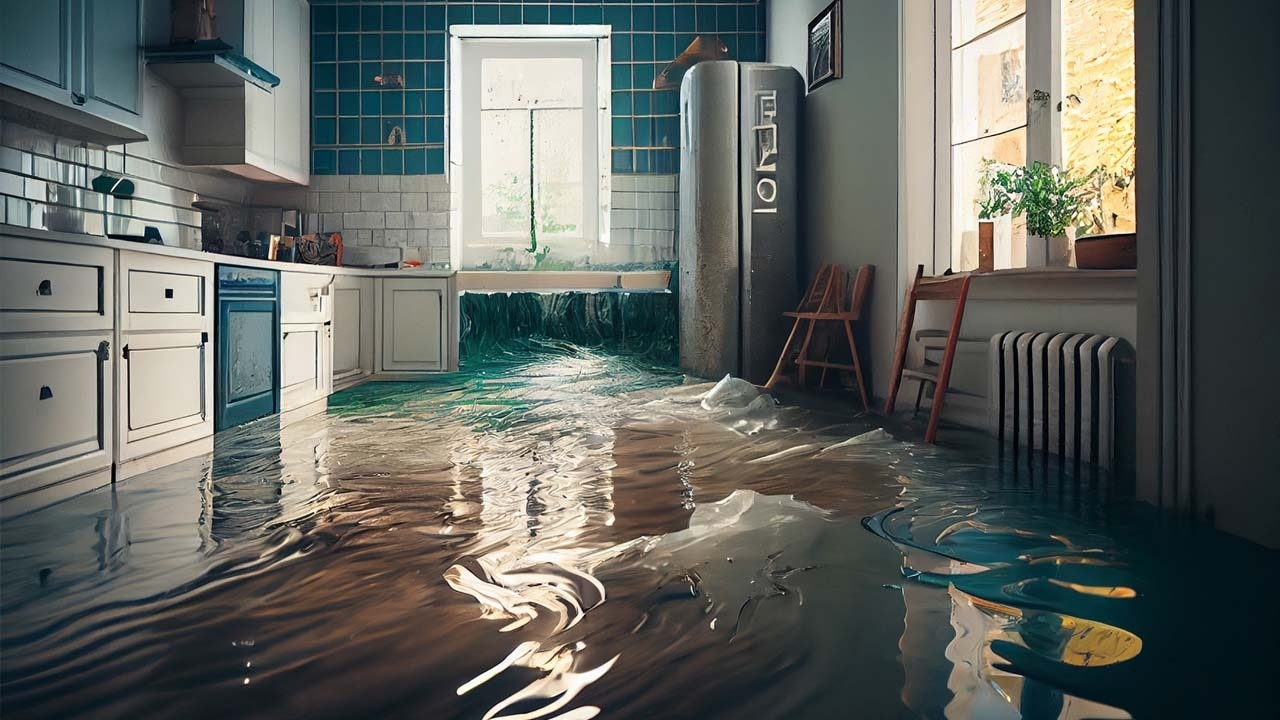Strategic Mold Inspection Philadelphia: Identifying and Attending To Mold Worries
Strategic Mold Inspection Philadelphia: Identifying and Attending To Mold Worries
Blog Article
Emergency Situation Water Damages Repair: Swift Reaction to Minimize Additional Damage
Water damages can strike suddenly and leave terrible results on homes and companies. When confronted with such a situation, a quick feedback is vital to decrease additional damages and protect against potential health and wellness dangers. What precisely does emergency situation water damage remediation involve? In this conversation, we will explore the relevance of prompt activity, the assessment process, the steps associated with water extraction and drying, mold prevention and removal, and inevitably, the restoration of the afflicted location. By understanding the urgency and detailed nature of this process, you will gain valuable understandings right into exactly how experts deal with emergency water damages, making certain a swift and reliable action.
Value of Swift Reaction
Swift response is of utmost importance in water damage reconstruction to decrease more damage and reduce potential threats. When water damages happens, whether due to a burst pipeline, an all-natural catastrophe, or any other unpredicted occasion, time is essential. The longer water beings in a building, the more damages it can trigger. This is why it is important to act swiftly and efficiently to remove the water and begin the repair process.
Among the main reasons swift reaction is vital in water damages repair is to avoid the growth of mold and mildew and mold. Mold and mildew can start to grow within 24 to 48 hours of water direct exposure, and once it holds, it can spread swiftly throughout the affected location. Mold not just creates additional damages to the structure of the structure but additionally positions health dangers to occupants. By reacting swiftly, specialists can thoroughly dry out the location and prevent the development of mold, minimizing the demand for comprehensive removal and making sure the safety of those included.
Water damage can be devastating, particularly when it influences individual products of sentimental or monetary value. Acting swiftly enables experts to evaluate the damages and carry out suitable reconstruction methods to restore as much as possible.
Analyzing the Extent of Damages

Throughout the assessment, restoration professionals extensively take a look at the damaged location to determine visible indications of damage, such as water stains, warped products, and mold and mildew growth. They likewise make use of specific equipment to detect hidden damages, such as wetness meters and thermal imaging electronic cameras. This detailed assessment allows them to accurately identify the degree of the damages and develop a customized remediation strategy.
Analyzing the degree of water damage is essential since it aids specialists prioritize their efforts. They can determine areas that require immediate interest, such as standing water elimination and drying out, to avoid more damage and minimize the danger of mold development. They can also establish the locations that need repair services or replacement, making sure that no damages goes without treatment or unnoticed.

Water Removal and Drying Out Process
The water removal and drying out procedure is an important step in water damage restoration, as it involves the removal of excess water and the complete drying of the afflicted area to protect against further damages and alleviate the threat of mold and mildew development. After evaluating from this source the degree of the water damage, the following action is to remove the water from the afflicted location. This is usually done utilizing specialized devices such as vacuum cleaners, dehumidifiers, and pumps. These tools are developed to effectively and efficiently get rid of water from various surfaces, including floorings, carpetings, and wall surfaces.
As soon as the excess water has actually been extracted, the drying out process starts. This step is necessary in avoiding second damage, such as architectural damages and the growth of mold and mildew. High-powered fans and dehumidifiers are utilized to circulate air and get rid of wetness from the air and surface areas. The drying procedure may take numerous days, relying on the level of the water damages and the products entailed.
It is crucial to make certain that the afflicted location is completely dry prior to proceeding with any kind of repair services or repair. Failure to thoroughly dry out the location can lead to lasting problems, consisting of damaged structures, stuffy smells, and the growth of mold and mildew. As a result, expert water damages restoration business utilize wetness detection tools to make certain that the afflicted location is totally dry before proceeding to the next step.
Mold Avoidance and Removal
Effective mold and mildew avoidance and remediation are crucial in water damages repair to make certain the safety and integrity of the affected area. home inspector philadelphia. When water damage occurs, whether from a burst pipe, flooding, or a dripping roofing system, it creates an excellent setting for mold growth. Mold and mildew can begin to develop within 24 to two days after water damages, and if left without treatment, it can spread out rapidly and create major wellness risks
To stop mold growth, it is vital to resolve water damages promptly. The very first action is to identify and fix the source of the water breach.
In cases where mold and mildew development has actually currently happened, remediation is needed to remove the mold and stop its return. This includes the cautious elimination and disposal of afflicted materials, such as drywall or carpeting, to ensure that all traces of mold and mildew are gotten rid of. It is vital to keep in mind that mold remediation must be performed by professionals that have the needed training and devices to securely deal with and get rid of mold.
Restoring the Affected Location

To start with, it is essential to extensively dry out the location to stop any type of more damages and to hinder the growth of mold and mildew. This might include the use of specialized drying out equipment, such as dehumidifiers and industrial-grade fans, to remove all dampness from the damaged surfaces.
When the location is totally dry, the reconstruction procedure click can start. This may involve changing or repairing damaged structural elements, such as ceiling, flooring, or drywall floor tiles. It is essential to deal with any type of underlying problems that may have created the water damages, such as leaky pipes or defective pipes, to stop future cases.
In addition, bring back the damaged area may also include repainting walls, replacing harmed components, and thoroughly cleaning and sanitizing the room. This guarantees that not only is the location structurally audio, however it is i thought about this additionally aesthetically pleasing and secure for occupancy.
Conclusion
Examining the level of damage permits for effective water removal and drying processes to be applied. In general, prompt action and extensive restoration steps are vital to reducing the unfavorable influences of water damage.
Swift action is of utmost importance in water damage repair to minimize additional damages and mitigate potential dangers.Throughout the assessment, remediation experts extensively examine the afflicted location to recognize noticeable signs of damage, such as water spots, distorted products, and mold and mildew growth.The water extraction and drying procedure is a crucial step in water damage repair, as it entails the elimination of excess water and the thorough drying of the afflicted area to stop more damages and minimize the risk of mold growth. After analyzing the extent of the water damage, the following action is to remove the water from the affected location.Reliable mold and mildew prevention and removal are crucial in water damage repair to make certain the safety and stability of the afflicted location.
Report this page